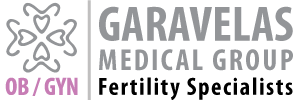In Vitro Fertilization (IVF) is a procedure first successfully utilized in 1978 in which a woman’s ovaries are stimulated with fertility drugs to produce multiple mature eggs, which are then removed from her body and are fertilized in the laboratory with her partner’s (or donor) sperm. The resulting embryos are cultured for three to five days, at which point the best 1 or 2 embryos are then transferred back into her uterus.
IVF Procedures
An IVF procedure at SIRM involves the following steps:
- Preparing for Controlled Ovarian Hyperstimulation (COH)
- Undergoing Controlled Ovarian Hyperstimulation
- Egg Retrieval
- Sperm Processing
- Fertilization of Eggs in the Laboratory
- Selecting the Best Embryos for Transfer
- Embryo Transfer
- Cryopreservation (Freezing) of Remaining Embryos (This is dependent on having additional viable embryos left after embryo transfer. Embryos can be frozen for use at a later time and at a much lower cost compared to a full IVF cycle.)

